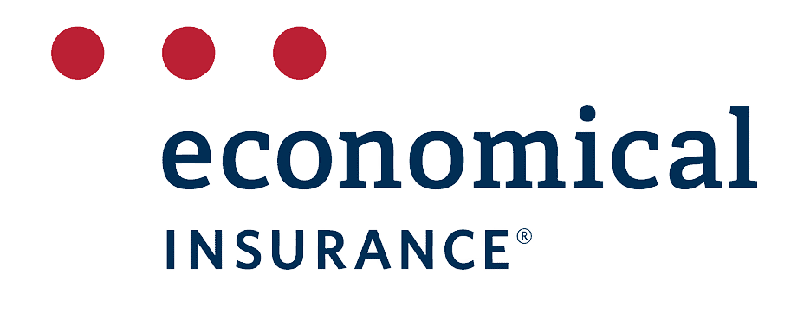It is not an uncommon thing to be involved in a rear-ended collision. In fact, one of the most popular types of accidents has been recorded every year to be rear-ended. This means there is no cause for alarm when it happens. But how to respond in that situation is what we have outlined in this article.
Though you can never be over-prepared for an accident because it doesn’t pre-inform you before it happens, but you can be prepared for how you respond. The first thing to know is, staying calm and being focused should be on your top list. After that, other things listed below should be taken into consideration.
8 Things to Do After a Rear-End Collision
Some of the primary causes of rear-end collisions are speeding, reckless driving, traffic congestion, mechanical failure, alcohol influenced driving and distraction.
If you have ever gotten involved in a rear-end collision, it will be expected that everyone involved in the crash will explain the situation as it is, but that is not always the case. Therefore, the best thing to do is not to rely on other drivers in such a situation but do the following. These steps listed below are practicable and would help you limit any legal or financial risk in the long run.
- Access yourself to see if you have incurred any injury
If you have been rear-ended, the first thing to do is to make sure you are fine. You might have to stop the car if it is still in motion and park to get yourself together to access that properly. But if it is a hit on a parked car, whether you are in it or not, it is best to stay where you are and exchange details with the other involved driver.
But if you are not static but on a major road or the highway, gently pull off the car in a safe place and not on the road. Once you have done that, ask the passengers in the vehicle if they are all okay. If you are the only one, check yourself to see if you have any injury caused by the collision. It is normal to feel scared at that point because of the sudden impact, especially if the crash was at high speed. But, take a moment to breathe and confirm if everyone is okay before considering who is at fault and who isn’t. In fact, regardless of who is at fault, you should not leave the scene until everything is settled.
- Take the necessary step to move to safety
It is one thing to be involved in one rear-end collision situation; it is another thing to be opened for further accidents. If you have had the situation once, don’t stay at that spot, especially on the highway. The best safe option at that point is to move to the side of the road. Although not all highway crashes permits side of the road as a safe spot, but mostly, that is what you should do. If there is no side of the road option, turn on your hazard light and move the car till you arrive at a safe place. Don’t even talk to the other driver until you are sure you are safe to interact and exchange details.
- Don’t be tempted to admit any fault
Most times, when a rear-end situation occurs, the car at the back is at fault. This is common but not the case every time. This isn’t true every time because the lead car can propel the collision on a few occasions. If the lead car reverses or doesn’t use the brake correctly, the rear car will have no choice but to barge in unknowingly. Therefore it is not advisable to take responsibility for a crash because you might be innocent. But once you have admitted the fault at the scene, you cannot go back on your words, and your insurance company will have to pay for the damages. The best call of action is to exchange details and leave the scene.
- Call the police and report the crash.
After making sure you are safe, it is expedient; you contact the police. Even if the situation is trivial and seems too small to disturb the police, you should still call. If you can, call the police to the scene and let them do their investigation. They will document the event of the accident and can adequately file the report to the right quota.
- Take as many pictures of the damaged car and the scene.
Many people believe their memory will do justice to holding vital information about the incident. That might be true to a certain time frame, but it is prone to be distorted over time. The best form of evidence you can use is to take photos of different scene angles. Yes, you might remember the model of the car that caused the accident, but would you know the way it hit the vehicle? Since photos still carry more reliable value, you should use them.
When taking photos, there are some things to look for such that it will be valuable to anyone trying to get info from it later. So, this is what you check for when taking pictures of the car and the scene.
- The damage on the trunk
- Electrical and transmission damage
- Bumper and frame damage
- Alignment problems
- Get the information of other involved drivers and give them yours
If you call the police to an accident scene, they will know what to do and the contact to collect. But if they don’t show up, or they do, you still need to get the info yourself and file it for yourself so that you can access it anytime.
Here’s the information you should obtain:
- The names, phone numbers and addresses of all the parties involved.
- The insurance providers of the involved parties, including the passengers.
- The license information of the driver and the passengers
- The model and make of the vehicles involved
- The plate number and the involved vehicles
- The time, date and location of the accident.
- Locate the nearest doctor that can provide you with the health care you need.
No matter how minor an accident can be, bodily injury can occur. You might not note the damage immediately because of the anxiety most accidents causes. When the shock has reduced, and you notice injuries, it is best to seek medical attention promptly.
Suppose you can reach your regular doctor, great if not try to visit the nearest doctor and get treated on time. Never assume an accident is too small to get you injured as Whiplash occurs even with a low speed rear-end collision. So, take care of yourself as quickly as you can. Some symptoms that show you already have Whiplash include headaches, dizziness, fatigue, neck pain, numbness in the fingers, shoulders or arms. So, get help when you notice any.
- Contact your insurance agent and keep them updated.
Once you encounter an accident, you might not have to think about your insurance provider immediately, which is normal. In fact, many people believe there is a stipulated time to wait before you call your insurance company after an accident. That is not the case because the time for each insurance company differs from another.
Some insurance providers will want such situations reported within 24 hours as they would like to do a proper follow-up. So, once you have filed the report with the police, let your insurance company become aware of the case at hand.
Well, regardless of when you speak to the insurance company according to the stated date on their policy, there are some things to note. If you want to communicate effectively with the company, consider these tips when you make a report.
- Considering all factors of an accident scene, don’t assume you are to be blamed. It might bounce back on you more than you expect if you do that.
- When they suggest that they want to record the call, allow them to; it shows you don’t have anything to hide.
- During the accident, you might have incurred Whiplash; skip mentioning it as they might not believe you if you tell them you have it.
- Don’t conclude quickly that you are not hurt as some injuries do not show up immediately, and when you raise it later, you might not be believed.
Get your car repaired at Mann auto collision centre.
Are you searching for a good and reliable auto body shop with many years of experience, then Mann auto collision centre is your plug? We have helped people come out of their stressful accident experiences by providing them with the support they need. We have the resources that help you scale through any accident hassle. Plus, we work well with insurance providers, which is a bonus for all our customers.
Give us a call today, and we are always ready to help.
Insurance providers we work with










